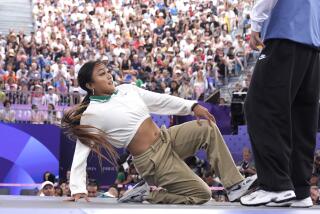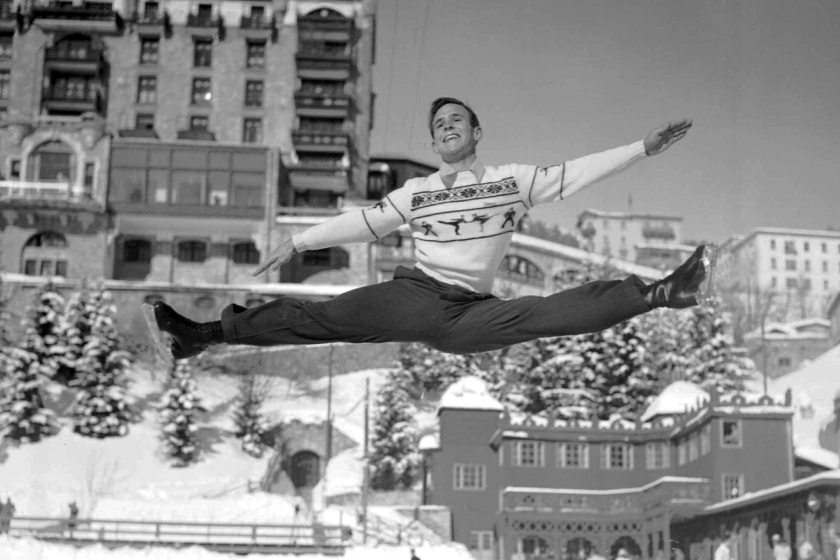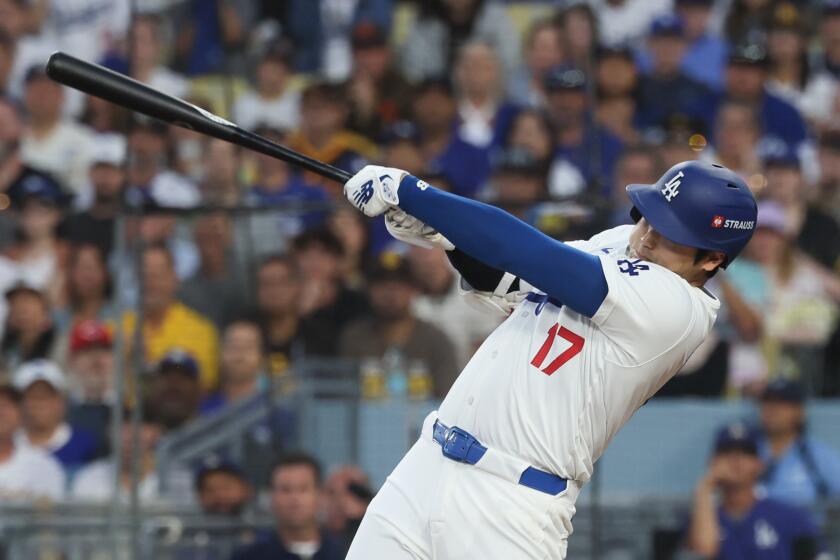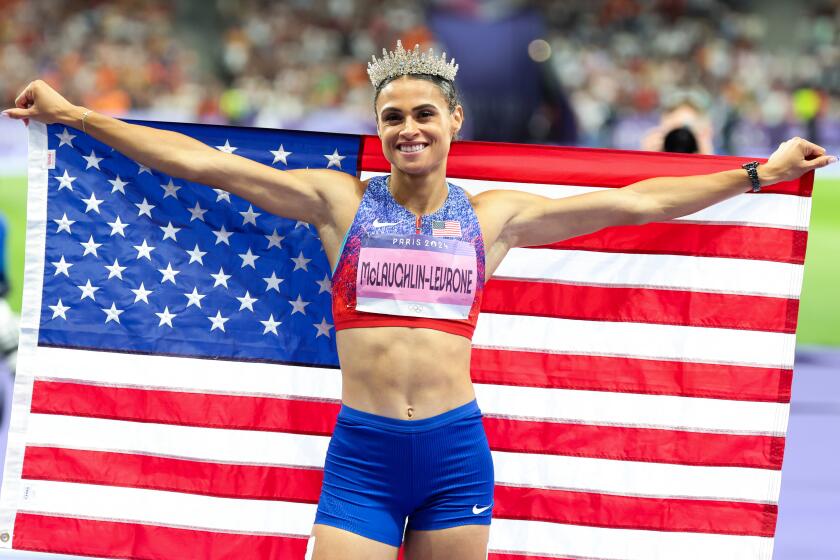Today’s Girls Run, Jump and Race the Wind
- Share via
My daughter was 7 when I hung the picture on her bedroom wall. It showed Carl Lewis, captured a heartbeat after he crossed the finish line at the 1984 Summer Olympics, pumping his fists toward the sky and looking like the most satisfied man in the Los Angeles Coliseum. Lewis won four gold medals at those games. How could anyone gaze on such a triumphant image and not want to share the joy of competition, not be inspired by the glow of physical power?
I am a sports journalist, and I have always enjoyed sharing my work with my daughter. Take Our Daughters To Work Day? I liked the idea from the beginning, but I also liked to bring my work home to her, and to my son, sometimes with pictures and sometimes with words. I was constantly amazed at how many lessons came along with the package.
When we lived in Paris in 1991, the Los Angeles Lakers came to play in an exhibition tournament and my children loved looking at the man with the biggest smile they had ever seen. Two weeks later, they would see that face on front pages of every newspaper on every kiosk, and we had our first conversation about what it means to be HIV positive and what the term “safe sex” is all about. The following summer, the lesson continued when Arthur Ashe lost his life to AIDS. We talked about how Ashe contracted his illness in a far different fashion than Magic Johnson, and how he had lived out his final days fighting ignorance and prejudice about the disease.
That was not the only lesson about prejudice. When my daughter was in kindergarten, she told her teacher that her mother was covering the French Open. “That can’t be true,” the teacher replied. “Only men do that.” Of course, I told my daughter that wasn’t true. Yes, I said, far fewer women than men write and edit sports stories, but no profession is off-limits to girls. No door is so tightly closed that it cannot be pushed open.
In 1976, the year I became a sportswriter, women were barred from locker rooms, no woman had ever been the sports editor or a sports columnist at a major daily newspaper and, aside from tennis, golf and the stray Olympic report, women’s sports were routinely ignored. This was four years after the enactment of Title IX, the federal law requiring schools to guarantee women students the same right as men to participate in athletics--a right buttressed April 21 by the Supreme Court.
It took a while for the effects of Title IX to be felt. It took the repeated filing of lawsuits by women denied the opportunity to play on teams at their schools. Even today, compliance with Title IX’s key guideline (at schools receiving federal funding, sports participation must be guaranteed at a percentage proportionate to the overall female student population) is nowhere near the standard among colleges.
But the mere existence of a federal law giving women the right to play changed the perceptions of a generation of girls. In the 1996 Summer Olympics, more women competed than ever before and their unprecedented success meant that little girls would never again lack for heroes who look like them.
Don’t doubt for a minute how important that is. I started out 21 years ago in a sports department with seven others, all men, and knew only one woman sportswriter, a pal from college. She and I stood outside locker rooms waiting for interviews, grateful we worked at afternoon newspapers with deadlines that did not require us to get a quote the instant a game ended. We weren’t afraid of what coaches and athletic directors who didn’t want us inside those locker rooms would think if we pushed the issue. We were afraid of what our editors would do with future assignments if they realized our access was limited.
I found my first hero in 1978, when Melissa Ludtke Lincoln of Sports Illustrated successfully filed suit to gain admission to the New York Yankees’ clubhouse. The women who come into sports journalism today don’t dream of being Red Smith. They dream of being Claire Smith, a baseball writer and columnist for the New York Times, and women like her.
And the girls who pick up balls and bats, who run and jump and race the wind, don’t dream of being Carl Lewis. My daughter was delighted when he won a gold medal last summer in Atlanta. But another athlete who also made a mark at those Olympics graces her door today: a charging, sweating, well-muscled woman named Mia Hamm, the star of the gold medal-winning U.S. soccer team. She is kicking a ball. She is yelling. She is beautiful. She is everything my daughter should know about my work.
More to Read
Go beyond the scoreboard
Get the latest on L.A.'s teams in the daily Sports Report newsletter.
You may occasionally receive promotional content from the Los Angeles Times.







